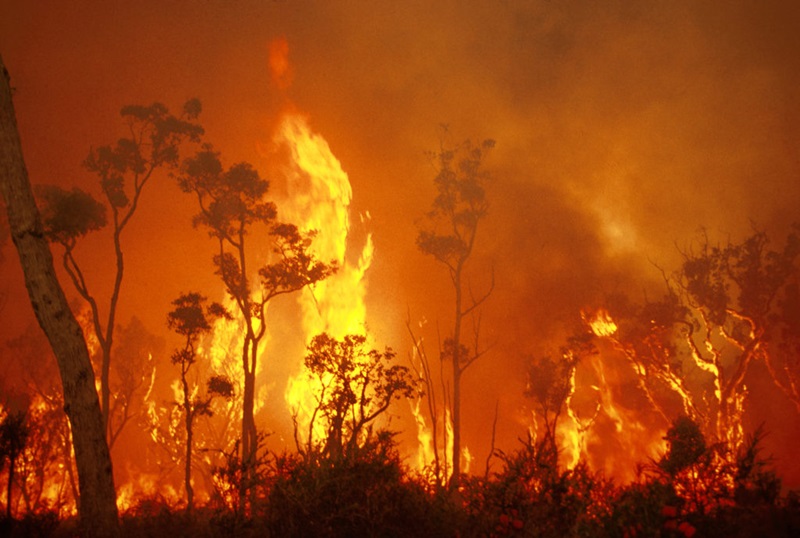BAL Report Basics: Vital Info for Property Owners
BAL Report Basics: Vital Info for Property Owners
Blog Article
Ensuring Bush Fire Protection Through Proper BAL Record Evaluation
In the world of bush fire security, the precise analysis of Bushfire Attack Degree (BAL) reports stands as a keystone for guarding properties versus the devastating influence of wildfires. With ecological variables and property features playing considerable roles in determining the degree of danger, a comprehensive understanding of BAL ratings ends up being crucial. Nevertheless, the real significance lies not simply in comprehending these records however in deciphering them successfully to formulate customized fire security strategies. By delving right into the significance of BAL record evaluation, we discover a world where informed choices pave the path in the direction of reinforcing residential or commercial property safety and security and resilience in fire-prone areas.
Understanding Bushfire Assault Degree (BAL)
In the realm of bushfire protection, comprehending the Bushfire Strike Degree (BAL) is extremely important for making certain reliable reduction methods. Comprehending the BAL score of a residential or commercial property is essential for residential or commercial property building contractors, policymakers, and proprietors to implement ideal procedures to safeguard versus bushfire risks.

Relevance of BAL Record Evaluation
A crucial aspect in bushfire defense preparation entails the thorough analysis of BAL records to analyze the potential threats and figure out proper mitigation techniques. BAL reports provide crucial details concerning the prospective effect of bushfires on a home based on various factors such as vegetation kind, range to prospective fire risks, and slope of the land. Examining these reports with accuracy is vital in establishing effective bushfire protection actions customized to the particular risk profile of a building.
Carrying Out Fire Defense Measures
Implementing effective fire security steps is important for safeguarding residential properties in bushfire-prone areas. One of the key methods to enhance fire protection is by developing defensible room around structures. This includes clearing combustible vegetation, such as dry leaves and branches, within a certain span of the property. Additionally, setting up fireproof roof covering products can help in reducing the danger of coal firing up the roof covering during a bushfire. Correctly preserved gutters and screens are additionally important to protect against debris buildup that might sustain a fire.
Additionally, having a adequate and properly maintained water supply, such as a storage tank or pool, can help firefighters in their initiatives to safeguard the residential or commercial property. BAL Report. On the whole, carrying out a combination of these fire defense steps can dramatically boost the opportunities of guarding residential properties during bushfire events.
Mitigating Threats in Fire-Prone Areas
To fortify buildings versus bushfire hazards, a critical emphasis on mitigating dangers in fire-prone areas is crucial. One vital element of danger mitigation is preserving defensible area around homes by removing flammable vegetation, making certain ample spacing between structures and trees, and using fire-resistant landscaping techniques.
Moreover, building or retrofitting buildings with fireproof materials and ensuring correct maintenance of roofs, seamless gutters, and exterior cladding can substantially enhance the home's resilience to bushfires. Practicing a bushfire and creating emergency plan with all passengers, including discharge procedures and interaction methods, is also vital visit this site right here in mitigating dangers efficiently. By taking on a positive method to risk reduction in fire-prone areas, homeowner can much better safeguard their properties and improve overall bushfire preparedness.
Ensuring Property Security and Strength
Making sure the safety and durability of residential or commercial properties in fire-prone locations requires an unwavering commitment to robust safety nets and critical preparation. Home safety and security begins with executing reliable measures to minimize fire threats. This includes preserving a defensible room around the property by removing flammable plant life, ensuring proper upkeep of rain gutters and roofings, and utilizing fireproof structure materials. Routine upkeep of firefighting tools, such as hoses and automatic sprinkler, is likewise critical to property resilience.
Strength, on the other hand, entails the capacity of a property to withstand and recover from a bushfire. This can be improved with the setup of ash guards on windows and vents, making certain that entrance points for embers are minimized. In addition, having a well-balanced emptying plan and exercising it consistently can dramatically enhance home resilience. Teaming up with next-door neighbors and regional fire authorities can also strengthen the safety and security and durability of homes in fire-prone areas. By proactively dealing with these facets, property proprietors can better protect their possessions and loved ones from the hazard of bushfires.
Verdict
In conclusion, making certain bushfire protection via proper BAL record evaluation is crucial for comprehending the degree of risk positioned by bushfires and implementing necessary fire security procedures. By minimizing risks in fire-prone locations and ensuring home safety and security and strength, individuals and communities can better get ready for and react to bushfire occasions. It is imperative to prioritize fire security procedures to shield lives and property in these high-risk environments.
In the world of bush fire defense, the thorough evaluation of Bushfire Strike Degree (BAL) records stands as a foundation for securing buildings versus the he said devastating impact of wildfires (BAL Report). Understanding the BAL ranking of a building is crucial for property policymakers, owners, and builders to carry out suitable procedures to secure against bushfire threats

BAL records give essential information regarding the prospective effect of bushfires on a residential property based on numerous factors such as vegetation type, distance to potential fire hazards, and slope of the land (BAL Report). In general, executing a combination of these fire security steps can considerably boost the possibilities of protecting residential properties throughout bushfire events
Report this page